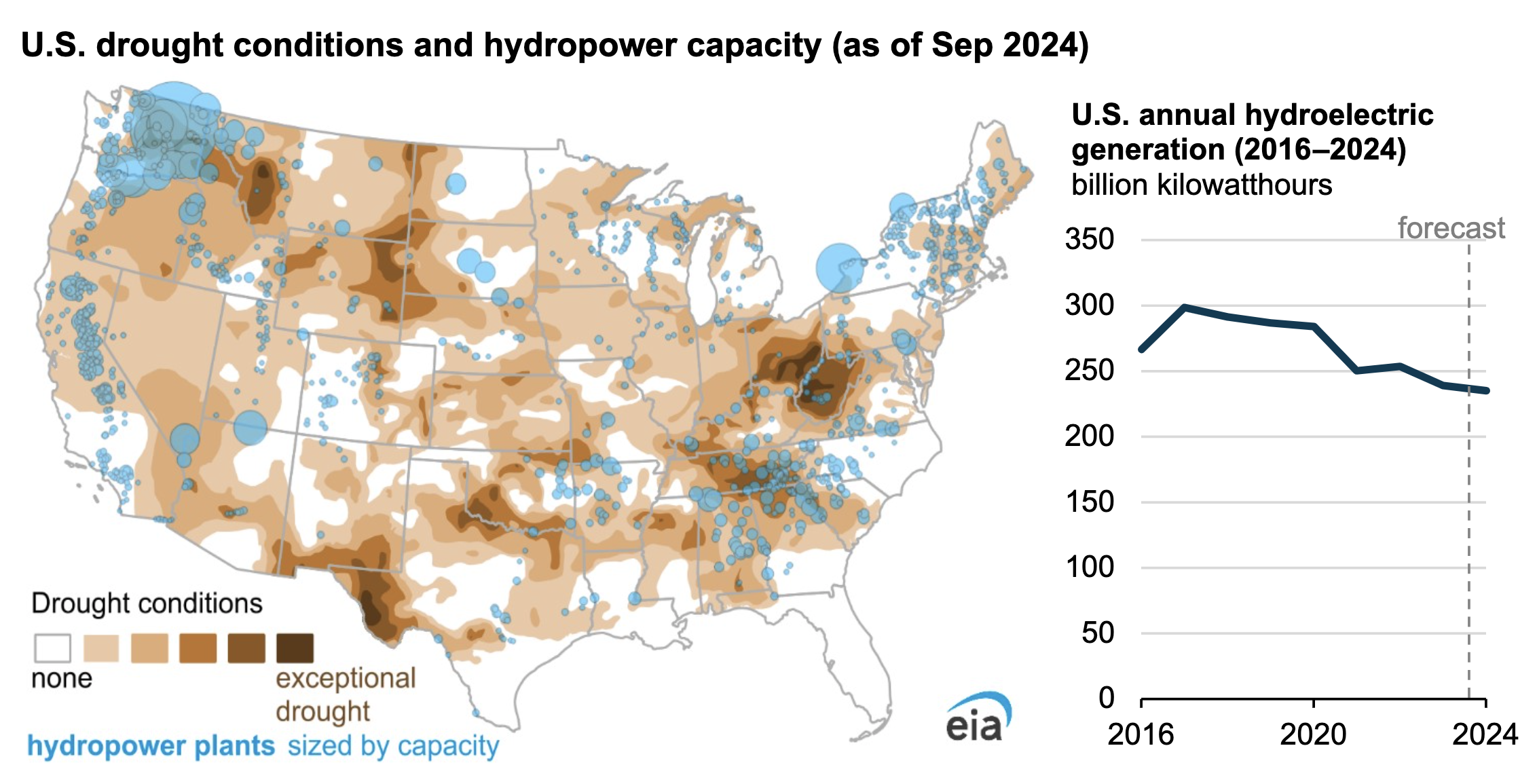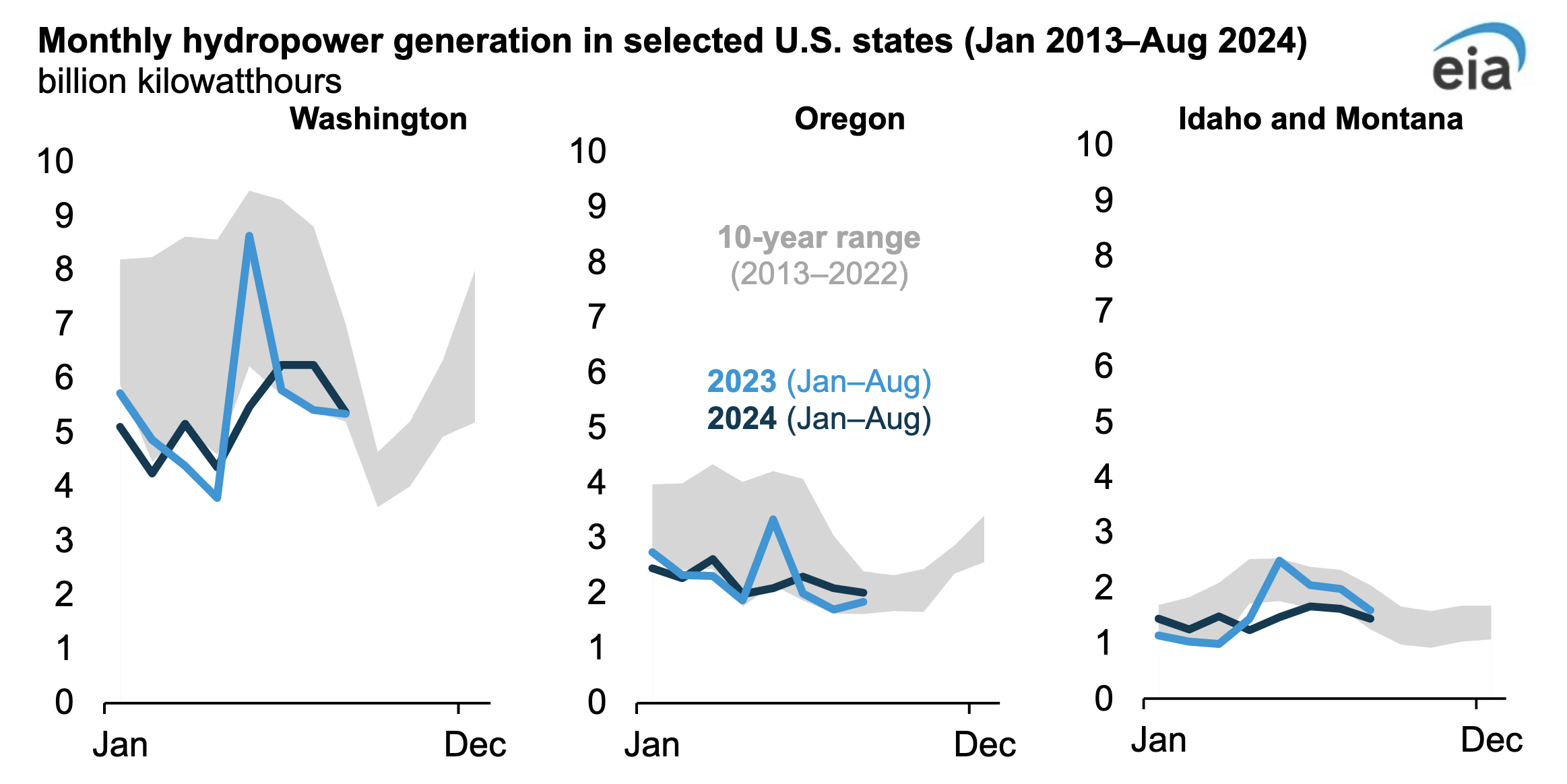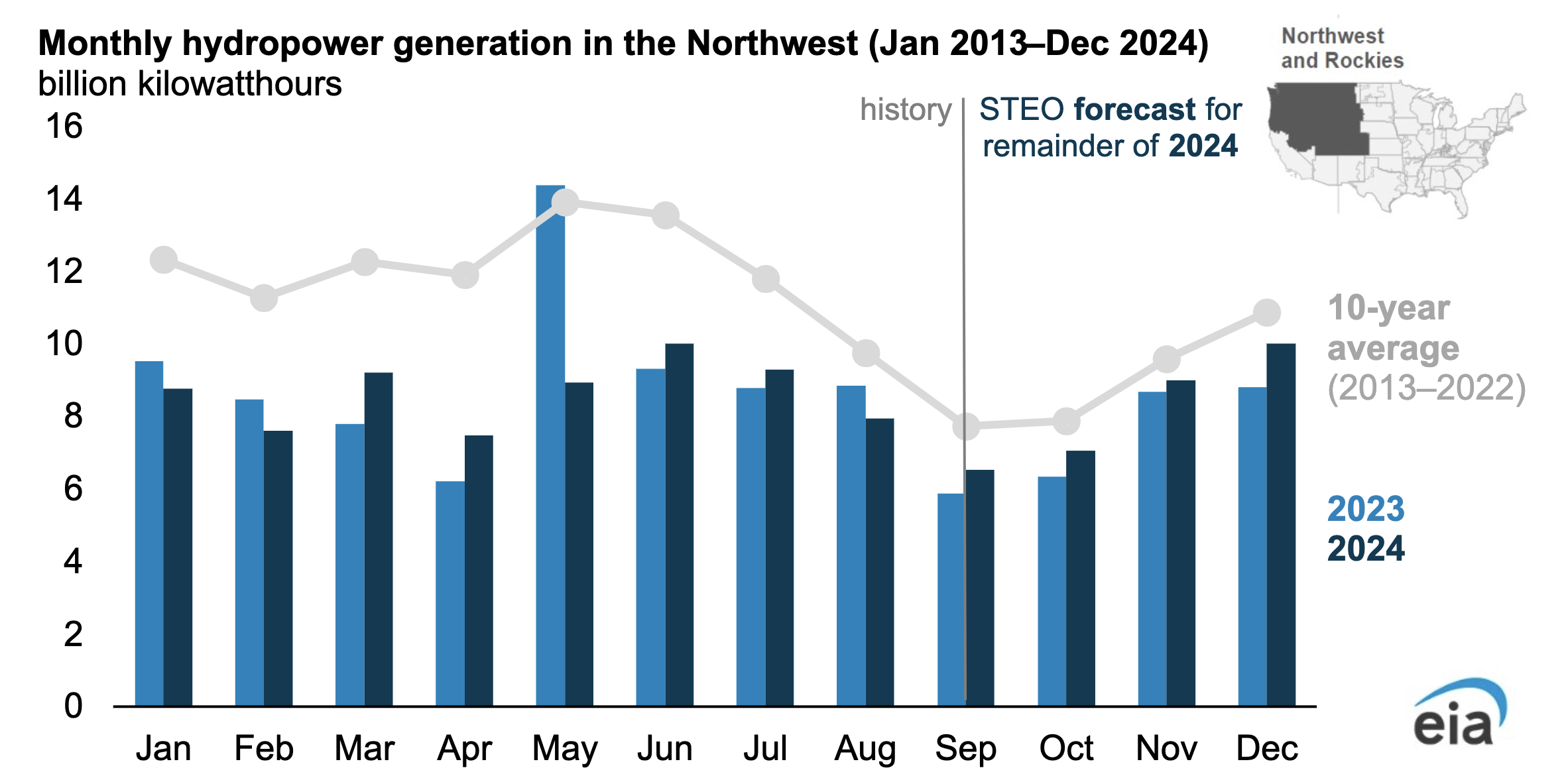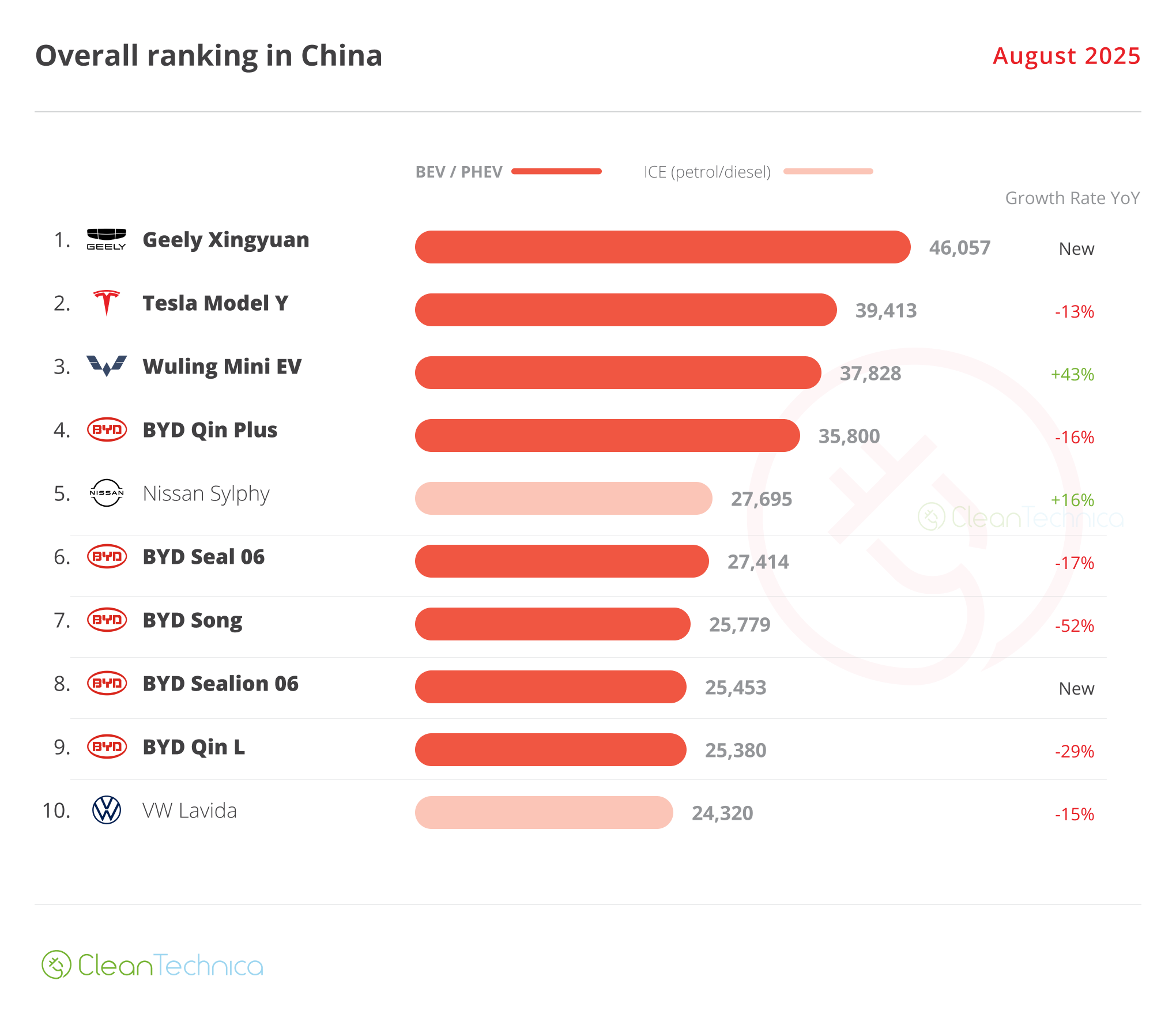Sign up for daily news updates from CleanTechnica on email. Or follow us on Google News!
Climate change grows year after year. Climate disruption becomes the norm, and then more disruption comes. We’re in a race against time, and time is winning. The good news is that renewable energy dominates new power capacity installations and new electricity generation. However, sometimes, renewable energy generation goes down, because of climate change.
Confused? Well, we’re talking about hydropower now. Drought keeps growing with climate disruption, and drought reduces hydropower output. But how much? Well, quite a lot this year apparently. “In our latest Short-Term Energy Outlook (STEO), we forecast that electricity generation from U.S. hydropower plants in 2024 will be 13% less than the 10-year average, the least amount of electricity generated from hydropower since 2001. Extreme and exceptional drought conditions have been affecting different parts of the United States, especially the Pacific Northwest, which is home to most U.S. hydropower capacity,” the U.S. Energy Information Administration (EIA) writes. Wow — a 13% drop!

“As of the end of September, 72.6% of the continental United States was experiencing dryer-than-normal to exceptional drought conditions, according to the U.S. Drought Monitor. By the end of October, this value increased to 87.2%. Multiple regions are affected by drought conditions, but the effects on hydropower generation are more obvious in the Pacific Northwest. For example, a recent study conducted by the University of Alabama found that hydropower generation in Washington state is one of the most susceptible to droughts in the country, ranking right below California based on data from 2003 to 2020.” Wow — 87% of the country is in a drought?
The EIA then went into the specifics of regions, rivers, and hydropower plants that are down due to the drought. You can jump into the specifics here. Or, if charts are your thing, here are two charts:


As you might have gathered by now, while US hydropower generation was down 13% overall (compared to the 10-year average), it was down much more in the Northwest. The EIA has the details: “In the STEO, we forecast electricity generation for electricity market regions instead of state geographical boundaries. We expect hydropower generation in the Northwest electricity region, which includes the Columbia River Basin and parts of other Rocky Mountain states, to total 101.8 billion kilowatthours (kWh) in 2024, a 23% decrease from the 10-year average of 132.8 billion kWh and a 1% decrease from 2023.” Wow — a 23% drop in generation!
Clearly, climate change and drought are putting a big hit in renewable energy generation in the US, making it that much harder to stop climate change and growing drought. See the problem?
Of course, renewable energy growth is almost entirely solar energy and wind energy growth. Hydropower is old tech. Though, it’s a great, steady complement for wind and solar. If only drought wasn’t constantly diminishing its role in the power system.

Chip in a few dollars a month to help support independent cleantech coverage that helps to accelerate the cleantech revolution!
Have a tip for CleanTechnica? Want to advertise? Want to suggest a guest for our CleanTech Talk podcast? Contact us here.
Sign up for our daily newsletter for 15 new cleantech stories a day. Or sign up for our weekly one if daily is too frequent.
CleanTechnica uses affiliate links. See our policy here.
CleanTechnica’s Comment Policy




